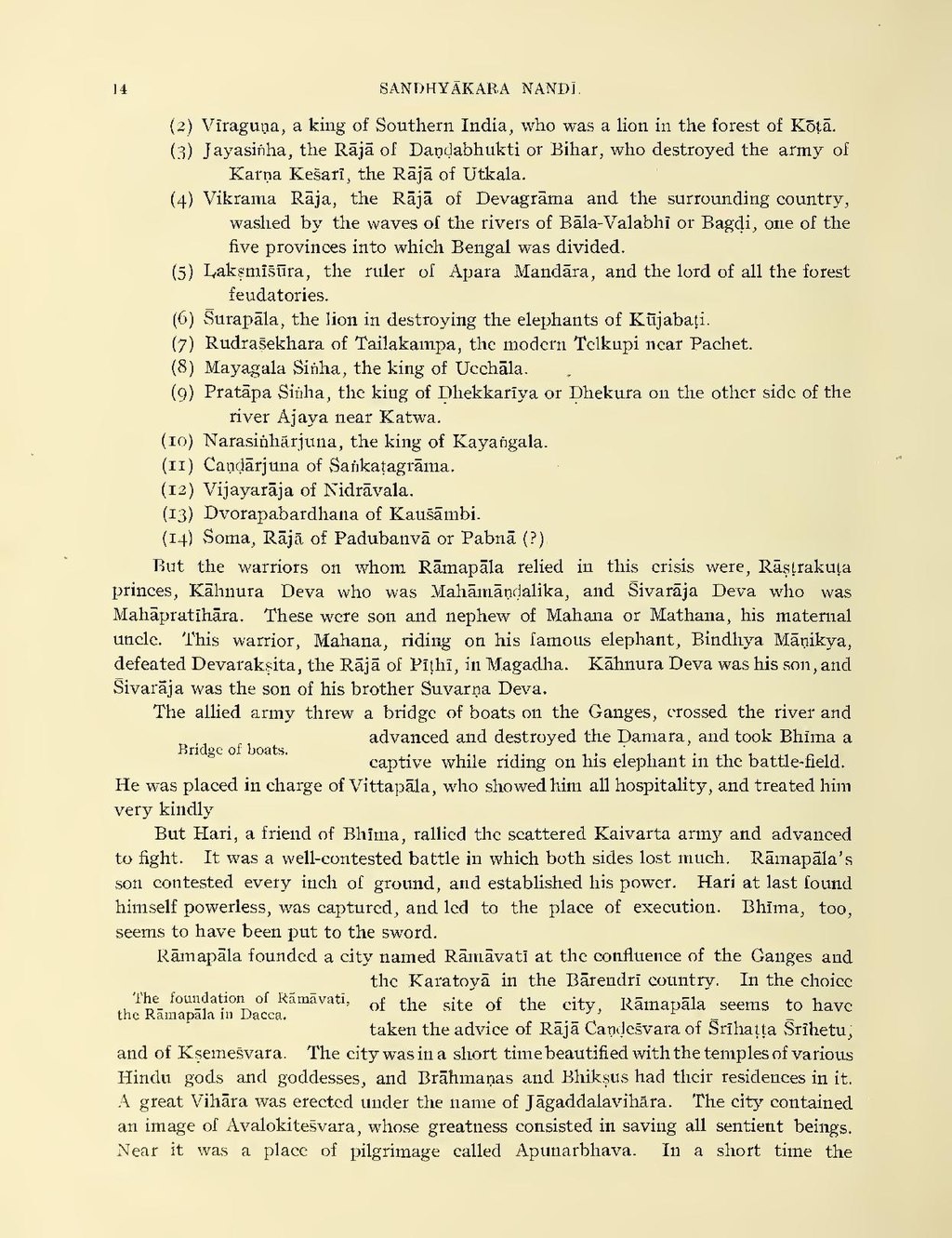SANDHYAKARA NANDI. (2) Viraguna, a king of Southern India, who was a lion in the forest of Kōtā. (3) Jayasinha, the Raja of Danḍabhukti or Bihar, who destroyed the army of Karna Kesari, the Raja of Utkala. (4) Vikrama Raja, the Rajā of Devagrama and the surrounding country, washed by the waves of the rivers of Bala-Valabhi or Bagdi, one of the five provinces into which Bengal was divided. (5) Laksmisūra, the ruler of Apara Mandara, and the lord of all the forest feudatories. (6) Surapala, the lion in destroying the elephants of Kujabați. (7) Rudrasekhara of Tailakampa, the modern Telkupi near Pachet. (8) Mayagala Sinha, the king of Ucchāla. (9) Pratāpa Sinha, the king of Dhekkariya or Dhekura on the other side of the river Ajaya near Katwa. (10) Narasińharjuna, the king of Kayangala. (11) Candārjuna of Sankaṭagrāma. (12) Vijayarāja of Nidrāvala. (13) Dvorapabardhana of Kaušāmbi. (14) Soma, Raja of Padubanvā or Pabnā (?) But the warriors on whom Ramapāla relied in this crisis were, Rāṣṭrakuļa princes, Kāhnura Deva who was Mahamandalika, and Sivarāja Deva who was Mahapratīhāra. These were son and nephew of Mahana or Mathana, his maternal uncle. This warrior, Mahana, riding on his famous elephant, Bindhya Manikya, defeated Devarakṣita, the Raja of Pithi, in Magadha. Kahnura Deva was his son, and Sivaraja was the son of his brother Suvarna Deva. Bridge of boats. The allied army threw a bridge of boats on the Ganges, crossed the river and advanced and destroyed the Damara, and took Bhima a captive while riding on his elephant in the battle-field. He was placed in charge of Vittapāla, who showed him all hospitality, and treated him very kindly But Hari, a friend of Bhima, rallied the scattered Kaivarta army and advanced to fight. It was a well-contested battle in which both sides lost much. Rāmapāla's son contested every inch of ground, and established his power. Hari at last found himself powerless, was captured, and led to the place of execution. Bhima, too, seems to have been put to the sword. Rāmapāla founded a city named Rāmavati at the confluence of the Ganges and the Karatoya in the Barendri country. In the choice of the site of the city, Ramapala seems to have taken the advice of Rājā Candesvara of Srihaita Srihetu, and of Ksemešvara. The city was in a short time beautified with the temples of various Hindu gods and goddesses, and Brāhmaṇas and Bhikṣus had their residences in it. A great Vihara was erected under the name of Jagaddalavihara. The city contained an image of Avalokitesvara, whose greatness consisted in saving all sentient beings. Near it was a place of pilgrimage called Apunarbhava. In a short time the The foundation of Kamavati, the Ramapala in Dacca.

